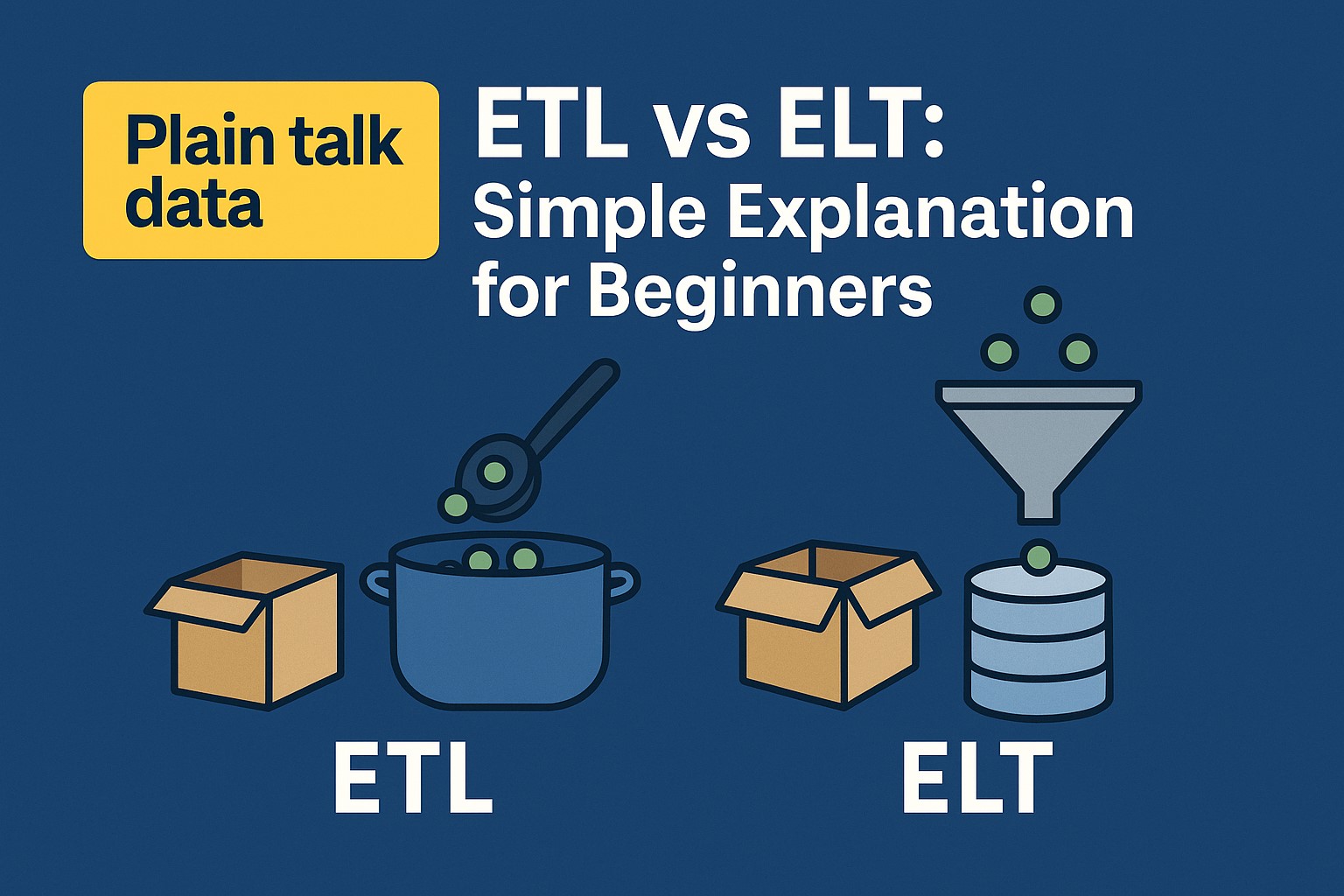Plain Talk Data: ETL vs ELT
A plain-English explanation of ETL vs ELT - like prep dinner at home vs prep dinner at the restaurant
ETL vs ELT = “Prep dinner at home vs prep dinner at the restaurant”
Both get you fed, but the timing and location are totally different.
ETL = “Prep at home, then bring to the party” Extract the ingredients from your fridge Transform them in your kitchen (chop, season, cook) Load the finished dish onto the party table
You do all the work at home with your own tools, then show up with a ready-to-eat casserole.
ELT = “Bring ingredients to the party, cook in their kitchen”
Extract the raw ingredients from your fridge
Load them straight into the party host’s kitchen
Transform them using their fancy equipment
You show up with raw chicken and vegetables, then use their industrial-grade oven and food processor to make dinner.
Real data example:
ETL (old school):
- Grab messy sales data from 5 different systems
- Clean it up on your laptop (remove duplicates, fix dates, calculate totals)
- Upload the clean, final report to the database
- Like making a cake at home, then bringing it to work
ELT (new hotness):
- Dump ALL the raw, messy data straight into your cloud database
- Let the cloud’s massive computing power do the heavy lifting
- Transform everything using the database’s built-in tools
- Like bringing flour and eggs to work, then using the office’s commercial-grade mixer
Why ELT is winning: Cloud databases are like having a restaurant-quality kitchen. Why struggle with your home equipment when you can use their industrial-strength tools?
The “aha”: It’s not about what gets done, it’s about WHERE the work happens.
More Plain Talk Data Topics
Keywords: ETL vs ELT, extract transform load, extract load transform, data processing methods, cloud data engineering, data pipeline architecture, modern data stack, data transformation strategies
